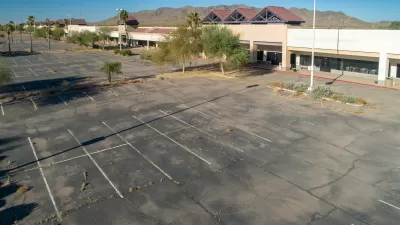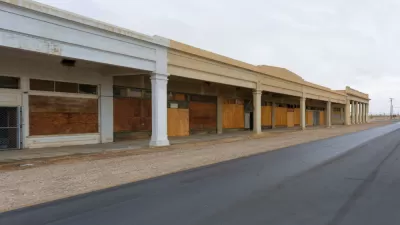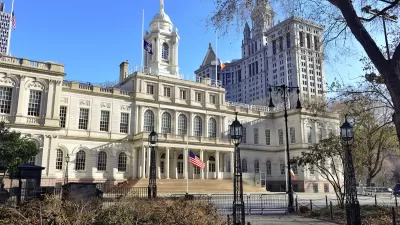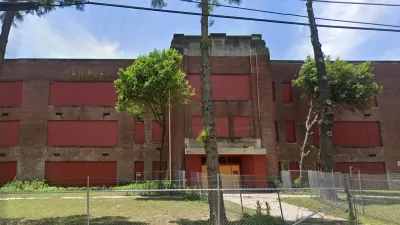Redeveloping just the best-suited 10 percent of America’s strip malls could result in 700,000 new affordable homes nationwide.

In an opinion piece for Next City, Ahmad Abu-Khalaf calls for the redevelopment of U.S. strip malls as part of the solution to the nation’s affordable housing crisis. While recent focus has largely been on office-to-housing conversions, a new analysis from Enterprise Community Partners, where he works as a senior research analyst, shows strip malls represent a bigger and lower-cost opportunity.
Enterprise research shows redeveloping just the best-suited 10 percent of America’s strip malls could result in 700,000 new affordable homes nationwide.
Strip malls offer several advantages over offices when it comes to adaptive reuse, according to Abu-Khalaf. For one, they’re everywhere; the U.S. has 947.5 million square feet of strip mall space in urban and suburban areas across the nation. Taking that into account, along with high vacancy rates, it’s likely most jurisdictions have one or more strip malls that are suitable for conversion.
And, “[u]nlike office-to-residential conversions, the redevelopment of strip malls focuses on repurposing the unbuilt portion of a site or building up from existing structures, rather than examining physically and financially feasible ways to repurpose high-rise office buildings into housing. In addition to creating new housing, mixed-use redevelopments of strip malls with retail space on the ground floor can keep existing retail tenants open and increase foot traffic,” says Abu-Khalaf. These factors can make the projects more viable.
He acknowledges strip mall conversions are not without challenges, such as site selection, zoning, a financing, and this new approach shouldn’t replace any existing strategies. He encourages local leaders to invest in removing barriers to speed up the process and points to California, which recently passed a series of laws that would allow underutilized commercial buildings to be converted into housing.
“But these increasingly vacant sites present an extraordinary opportunity. What’s happening in California can be a model for the rest of the country. With intentional efforts to remove barriers to strip mall conversions, we can significantly change the trajectory of the housing crisis in America,” say Abu-Khalaf.
FULL STORY: California Is Showing The Potential Of Strip Mall-To-Housing Conversions

Alabama: Trump Terminates Settlements for Black Communities Harmed By Raw Sewage
Trump deemed the landmark civil rights agreement “illegal DEI and environmental justice policy.”

Study: Maui’s Plan to Convert Vacation Rentals to Long-Term Housing Could Cause Nearly $1 Billion Economic Loss
The plan would reduce visitor accommodation by 25% resulting in 1,900 jobs lost.

Planetizen Federal Action Tracker
A weekly monitor of how Trump’s orders and actions are impacting planners and planning in America.

Wind Energy on the Rise Despite Federal Policy Reversal
The Trump administration is revoking federal support for renewable energy, but demand for new projects continues unabated.

Passengers Flock to Caltrain After Electrification
The new electric trains are running faster and more reliably, leading to strong ridership growth on the Bay Area rail system.

Texas Churches Rally Behind ‘Yes in God’s Back Yard’ Legislation
Religious leaders want the state to reduce zoning regulations to streamline leasing church-owned land to housing developers.
Urban Design for Planners 1: Software Tools
This six-course series explores essential urban design concepts using open source software and equips planners with the tools they need to participate fully in the urban design process.
Planning for Universal Design
Learn the tools for implementing Universal Design in planning regulations.
Caltrans
Smith Gee Studio
Institute for Housing and Urban Development Studies (IHS)
City of Grandview
Harvard GSD Executive Education
Toledo-Lucas County Plan Commissions
Salt Lake City
NYU Wagner Graduate School of Public Service





























